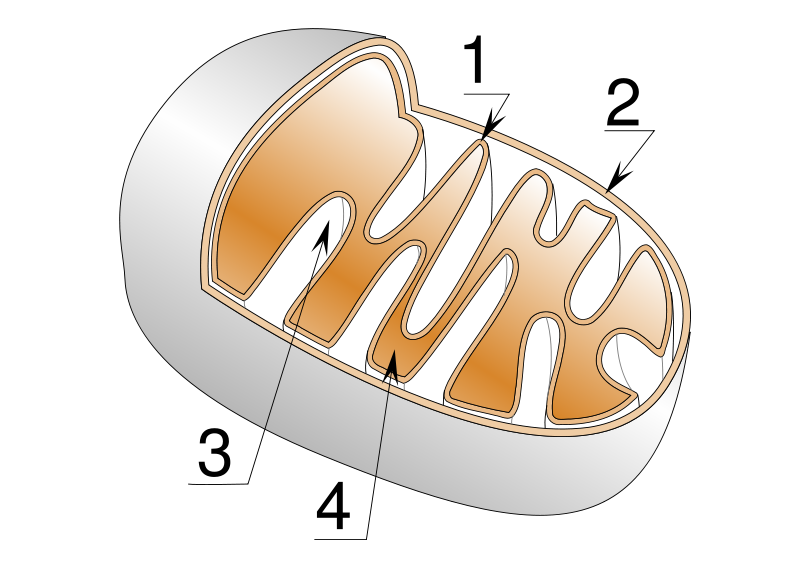Crista

1) Inner membrane
2) Outer membrane
3) Crista
4) Matrix
|
WikiDoc Resources for Crista |
|
Articles |
|---|
|
Media |
|
Evidence Based Medicine |
|
Clinical Trials |
|
Ongoing Trials on Crista at Clinical Trials.gov Clinical Trials on Crista at Google
|
|
Guidelines / Policies / Govt |
|
US National Guidelines Clearinghouse on Crista
|
|
Books |
|
News |
|
Commentary |
|
Definitions |
|
Patient Resources / Community |
|
Directions to Hospitals Treating Crista Risk calculators and risk factors for Crista
|
|
Healthcare Provider Resources |
|
Continuing Medical Education (CME) |
|
International |
|
|
|
Business |
|
Experimental / Informatics |
Overview
Cristae (singular crista) are the internal compartments formed by the inner membrane of a mitochondrion. They are studded with proteins, including ATP synthase and a variety of cytochromes. The maximum surface for chemical reactions to occur is within the mitochondria. This allows cellular respiration (aerobic respiration since the mitochondria requires oxygen) to occur.
Electron transport chain of the cristae
NADH is split into NAD+, H+ ions, and electrons by an enzyme. FADH2 is also split into H+ ions, electrons, and FAD. As those electrons travel further through the electron transport chain in the inner membrane, energy is gradually released and used to pump the hydrogen ions from the splitting of NADH and FADH2 into the space between the inner membrane and the outer membrane (called the intermembrane space), creating an electrochemical gradient. As a result, chemiosmosis occurs, producing ATP from ADP and a phosphate group when ATP synthase harnesses the potential energy from the concentration gradient formed by the amount of H+ ions. H+ ions passively pass into the mitochondrian matrix by the ATP synthase, and later on help to reform H2O.
The electron transport chain requires a constant supply of electrons in order to properly function and generate ATP. However, the electrons that have entered the electron transport chain would eventually pile up like cars traveling down a one-way dead-end street. Those electrons are finally accepted by oxygen (O2), which combine with some of the hydrogen ions from the mitochondrian matrix through ATP synthase and the electrons that had traveled through the electron transport chain. As a result they form two molecules of water (H2O). By accepting the electrons, oxygen allows the electron transport chain to continue functioning.
The electrons from each NADH molecule can form a total of 2.5 ATPs from ADPs and phosphate groups through the electron transport chain, while each FADH2 molecule can produce a total of 1.5 ATPs. As a result, the 10 NADH molecules (from glycolysis and the Krebs cycle) and the 2 FADH2 molecules can form a total of 34 ATPs from this electron transport chain during aerobic respiration. This means that combined with the Krebs Cycle and glycolysis, the efficiency for the electron transport chain is about 65%, as compared to only 3.5% efficiency for glycolysis alone.
Usefulness
The cristae greatly increase the surface area on which the above mentioned reactions take place. If they were absent, the inner membrane would be reduced to a single spherical shape, and with less reaction surface available, the reaction efficiency would be likewise reduced. Therefore, cristae are a necessity for the mitochondria to function efficiently.